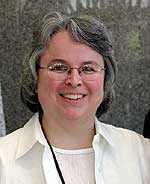By Art Hughes
Minnesota Public Radio
June 3, 2002
The last decade of the 20th century proved to be a boom time for Minnesota. New census figures released Monday show substantial jumps in median household income between 1990 and 2000. At the same time family poverty rates - already one of the lowest in the nation - dropped by nearly one quarter. The price of success, however, shows up in lengthening commutes and higher home prices.
| |
|
|
|
||
Michaela Diercks remembers the last half of the 1990s as a time when seemingly everyone was caught up in the promise and profit of heady times. Diercks says it was clear from her vantage point, as Vice President of Marketing for Harmon Auto Glass, that Minnesota's economy was churning.
"That job, that company, that time was very fast-paced, exciting - new sales every day, new innovation every day. (There was) the occasional disappointment - but very exciting making quite a bit of money, the company and I guess me personally. It was exciting time," says Diercks.
Data from the U.S. Census Bureau show the state's median income rose more than 17 percent, after adjusting for inflation. The number is taken from the long form questionnaire, which was filled out by about one in six households.
The highest and lowest median household income is separated by more than $36,000. Scott County near the Twin Cities has a median of $66,600 dollars - an increase of almost 26 percent from 10 years ago. Mahnomen County's median income is $30,000. The median is the number in the middle between the highest and lowest reported numbers. No county had a decrease over the decade.
The picture improves even more with a drop in the number of families below the poverty level, as defined by the federal government. Overall, Minnesota saw a drop of families in poverty of about 23 percent. State demographer Tom Gillaspy says the poorest parts of the state still struggle, but they're better off than they were 10 years ago.
| |
|
|
|
||
"Poverty rates were relatively low 10 years ago compared with the rest of the nation. They've continued to fall, and fallen fairly sharply," says Gillaspy. "And it's not just an overall decline. It's a decline in the rate, it's a decline in the number of poor households, it's a decline in every county of the state. It is a decline in every family type and age group. It's pretty much of an overall, unified decline."
Income growth was strongest in counties outside of metropolitan areas. Swift and Cass counties both had median income growth rates over 40 percent.
State economist Tom Stinson says the growth is probably a result of more people retiring to the lakes areas, and the presence of casinos on Indian reservations.
"The fastest growing counties in the state in terms of median family income tended to be bunched up in the center of the state," says Stinson. "What was surprising to me - at least among the slowest growing in terms of median family income - were Anoka, Hennepin, Ramsey, Olmsted."
Along with incomes, commute times and housing prices also increased significantly.
The rate of increase in commuting time in the Twin Cities metropolitan area more than doubled since 1990, compared to the decade before. A concentration of long commutes along Highway 35 north of the Twin Cities also indicates people are willing to drive longer distances to get to work. The average commuting time in Pine, Chisago, Kanabec and Isanti counties all inched up over 30 minutes.
|
"We are now moving into the league of the Chicagos and the major congested areas in the nation, really without the kind of transit alternatives that other communities have. "
- Met Council Chairman Ted Mondale |
Minnesota Department of Transportation Planning and Analysis Director Abigail McKenzie says it appears there's another ring of development occurring outside the existing ring of suburban counties.
"It's a really surprising rate of growth....We've been hearing certainly about the sprawl in these areas - the conversion of these areas from rural areas to bedroom communities," says McKenzie. "If we find the destination is the Twin Cities, this commute time really does suggest the labor market is really spread out."
In the Twin Cities area, the average commute increased by only a couple of minutes. But McKenzie says any change can drive serious policy considerations.
"That means on average, every driver in the Twin Cities increased their travel time by two minutes...So if there's 1.4-million drivers in the Twin Cities metro area, that means there's been an increase of three million minutes of travel time," McKenzie says. "So a little change - when you multiply it by the millions of drivers - means a big change for the transportation system."
Most counties have an increase in the number of people driving alone to work. Use of public transportation in the Twin Cities, where transit is most established, decreased, although at a slower rate than the decade before. Transit ridership in the state as a whole increased five percent.
Gary Barnes is a transportation economist with the University of Minnesota's Hubert Humphrey Institute. He says a rising economy usually cuts into public transportation ridership.
| |
|
|
|
||
"A lot of transit riders are people who can't afford to buy cars. As people get richer and people can afford to buy cars, that market dries up over time. So my hunch is that's what's going on here," says Barnes.
The numbers are a greater indication of rising traffic congestion.
"We've been saying, "Yeah it's getting worse, but it's not as bad as Chicago,'" says Metropolitan Council Chairman Ted Mondale. He says the numbers bolster the Met Council's argument that outlying areas need to consider transit in their development plans.
"If you look at the numbers, we are now moving into the league of the Chicagos and the major congested areas in the nation, really without the kind of transit alternatives that other communities have."
Commuters are driving home to more expensive houses, and housing is costing a larger percentage of workers' monthly paychecks. The state's median home value jumped 65 percent, more than double the inflation rate over the same period.
Swift and Cass Counties, which led in the rate of income growth, also topped the list in rate of growth in home values. The highest values are in fast-growing Carver County, where the median is $170,000. St. Louis County is next with a median home value of $157,000.
Over the past 10 years, 40 percent more Minnesotans say housing costs more than 35 percent of their monthly income, which is the federal government's benchmark for affordability.
More from MPRMore Information



